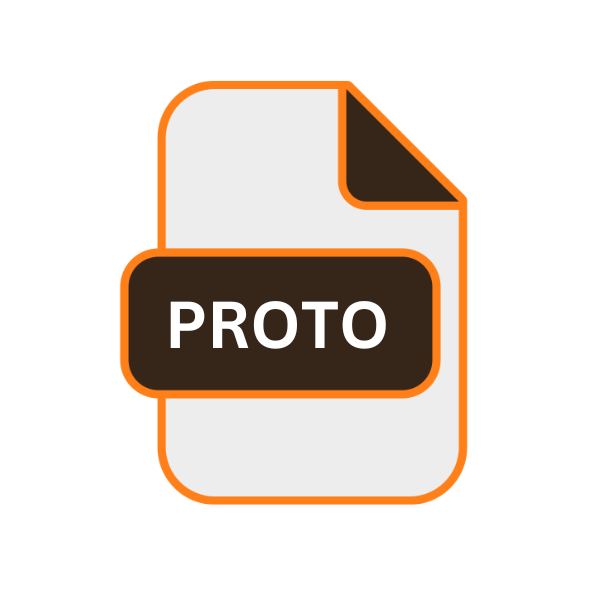.PROTO File Extension

Protocol Buffer File
| Developer | |
| Popularity | |
| Category | Developer Files |
| Format | .PROTO |
| Cross Platform | Update Soon |
What is an PROTO file?
The .PROTO file extension is primarily associated with Protocol Buffer files, a widely used method of serializing structured data.
Developed by Google, Protocol Buffers provide a platform-neutral, extensible mechanism for serializing structured data, making it suitable for communication protocols, data storage, and more.
More Information.
The initial purpose of Protocol Buffers was to provide a language-neutral, platform-neutral, extensible mechanism for serializing structured data.
This was crucial for applications where efficiency, speed, and cross-platform compatibility were paramount, such as in distributed systems, data storage, and inter-process communication.
Origin Of This File.
Protocol Buffers, often referred to simply as Protobuf, were developed by Google in 2001 to address the need for a simpler and more efficient method of serializing structured data.
Originally designed for internal use, Google open-sourced Protocol Buffers in 2008, leading to its widespread adoption across various industries and applications.
File Structure Technical Specification.
Protocol Buffer files (.PROTO) are defined using a language syntax that resembles C/C++ struct definitions. Here’s a basic breakdown of their structure:
- Message Types: Defined structures resembling classes or structs in traditional programming languages.
- Fields: Data elements within messages, each with a unique numeric tag for efficient encoding.
- Enums: Enumerated types for defining a set of named values.
- Services: Interfaces that define remote procedure calls (RPCs) for inter-process communication.
Protocol Buffers are compiled using the protoc compiler, which generates code in various programming languages (e.g., C++, Java, Python) based on the .PROTO file definitions.
How to Convert the File?
To convert a .PROTO file (Protocol Buffer file) into usable code in various programming languages, you typically use the protoc compiler provided by Google’s Protocol Buffers library. Here’s a step-by-step guide on how to convert .PROTO files into code for different languages:
1. Install Protocol Buffers Compiler (protoc): Begin by installing the Protocol Buffers compiler (protoc) appropriate for your operating system. You can download it from the official Protocol Buffers GitHub repository or use a package manager if available.
2. Define Your .PROTO File: Create or obtain your .PROTO file that defines the data structures (messages), fields, and optionally services using the Protocol Buffers language syntax. This file serves as the blueprint for generating code.
3. Compile .PROTO File: Use the protoc compiler with specific flags (--<language>_out) to generate code tailored to your desired programming language. Replace <language> with the target language such as C++, Java, Python, etc.
4. Integrate Generated Code: After compiling, you will obtain language-specific source files (e.g., .cpp, .java, .py). Integrate these generated files into your project in the respective programming language.
Incorporate these files into your development environment and use them to serialize, deserialize, and manipulate data based on the structured schema defined in your .PROTO file.
Advantages And Disadvantages.
Advantage:
- Efficiency: Compact binary format reduces data size and transmission overhead.
- Speed: Faster serialization and deserialization compared to XML and JSON.
- Language and Platform Neutrality: Generated code supports multiple programming languages and platforms.
Disadvantage:
- Schema Changes: Modifying .PROTO definitions can require careful management to maintain compatibility.
- Human Readability: Binary nature of serialized data can make debugging and manual inspection challenging.
- Learning Curve: Requires familiarity with .PROTO syntax and the
protoccompiler for effective use.
How to Open PROTO?
Open In Windows
Integrate generated .PROTO code (e.g., C++, Java) into Visual Studio for efficient data serialization.
Open In Linux
Utilize generated code (e.g., Python, Go) in Linux environments for streamlined data handling.
Open In MAC
Integrate Objective-C or Swift code into Xcode for seamless Protocol Buffer usage on Apple devices.
Open In Android
Incorporate generated Java classes into Android Studio to manage data serialization in mobile applications.
Open In IOS
Integrate Objective-C or Swift code into Xcode to handle Protocol Buffers effectively on iOS platforms.
Open in Others
Compile .PROTO files for specific languages (e.g., C#, Ruby) and integrate generated code into respective development environments for versatile data serialization capabilities.













